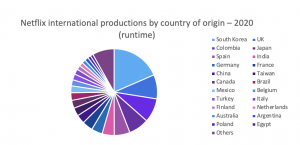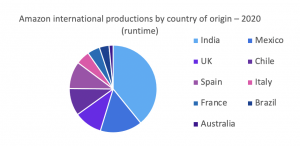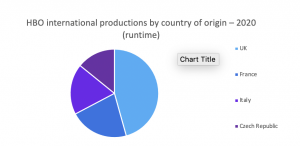
After more than 35 years of operation, TBI is closing its doors and our website will no longer be updated daily. Thank you for all of your support.
TBI Tech & Analysis: Where US streamers are looking for global originals
Tim Westcott, senior principal analyst, channels and programming at research powerhouse Omdia, explores which countries are proving most attractive as sources of original content for US-based streaming leaders.
With the rise of truly global streaming services, content from other countries has never been easier for audiences to access, with many of the market-leading US-based streamers making international commissions to stand out from the competition.
But whether they are seeking for broad global appeal or simply looking to secure what they hope will be the next big IP, each service has their own approach to commissioning.
Global resonance
Last year, Netflix transmitted original programs from 43 countries (apart from the US). While the need to drive its services into more and more countries worldwide is key, the streamer is also looking for content which can resonate with global audiences.
Perhaps it’s no surprise, given the increasing popularity of Korean content, that Netflix launched 392 hours of content from that country. Netflix has long-term partnerships with JTCB and Studio Dragon and says it has invested $700 million on Korean content since 2015.
Other countries providing a large volume of content are the UK, Colombia, Spain and India, where Netflix planned to invest $420 million in 2019 and 2020. The streamer has also leased production facilities in Spain, Korea and the UK and this year made only its second production company investment when it acquired a 75% stake in Broke and Bones, owned by Black Mirror creators Charlie Brooker and Annabel Jones.
Netflix grew its international footprint further in the midst of last year’s pandemic, but with 74 million customers, the US and Canada remain its largest territory, ahead of EMEA (67 million), Latin America (37.5 million) and Asia Pacific (25.5 million).
Measured pace
Amazon, meanwhile, commissions from fewer countries than Netflix, with the rollout of its streaming service and Prime delivery package taking place at a more measured pace. Its focus on India, with 106 hours of content originated last year, underlines the country’s important place in the streamer’s global plans. This was up from 28 hours in 2019.
The UK is still a key market, with 28 hours originated last year compared to 23 hours last year. Originations have also increased in Spanish-speaking Mexico, Spain and Chile. But Amazon has pulled back significantly from origination in Germany and Japan in the last two years.
In genre terms, scripted drama series accounted for 56% of Amazon’s original productions last year, with the volume also increasing each year since Amazon started originating. The platform also appears open to unscripted programming sourced outside the US, but is noticeably less active in the children’s genre.
Amazon has also moved further into live sports streaming, expanding its deal for NFL rights and adding rights like European rugby and football to its international portfolio.
Specific focus
Operating in Europe, Asia and Latin America, HBO is perhaps the US-based service with the most international programming reach after Netflix. However, the volume of international programming on HBO (the linear channel and HBO New D2C service) was quite low last year, and more linked to specific productions than global ambition.
HBO’s originals included two co-productions with the UK’s BBC, (I May Destroy You and Industry), and a second season of The New Pope, co-produced with France and Italy. Online is, however, bringing more international content to HBO Max viewers in the US, with series like Pakt from HBO Poland, Patria from HBO Espana and Beforeigners from HBO Nordic.
Drama was the leading genre in HBO’s output last year, with 79 hours compared to 97 hours in 2019. However, reflecting HBO’s output of factual programming, news and documentaries were not far behind, totalling 60 hours last year.
HBO Max, meanwhile, offered a broadly similar mix of genres last year, with 61 hours of first run drama and 49 hours of documentaries. However, it also transmitted significant amounts of entertainment (57 hours) and children’s programming (27 hours) last year.
The excerpt above comes from Online Original Content April 2021. This in-depth report was written by Tim Westcott, who is senior principal analyst, channels and programming, at research powerhouse Omdia, which – like TBI – is part of Informa.






